| Listing 1 - 10 of 74 | << page >> |
Sort by
|
Book
ISBN: 0883091194 Year: 1984 Publisher: Columbus, Ohio : Zaner-Bloser,
Abstract | Keywords | Export | Availability | Bookmark
 Loading...
Loading...Choose an application
- Reference Manager
- EndNote
- RefWorks (Direct export to RefWorks)
Penmanship --- English language --- Ecriture --- Anglais (Langue) --- Writing --- Etude et enseignement --- 612.8 --- Zenuwstelsel. Zintuigen. Motorische neurowetenschappen
Book
ISBN: 2225803838 Year: 1985 Publisher: Paris,New York : Masson,
Abstract | Keywords | Export | Availability | Bookmark
 Loading...
Loading...Choose an application
- Reference Manager
- EndNote
- RefWorks (Direct export to RefWorks)

ISBN: 0071054766 Year: 1996 Publisher: New York McGraw-Hill
Abstract | Keywords | Export | Availability | Bookmark
 Loading...
Loading...Choose an application
- Reference Manager
- EndNote
- RefWorks (Direct export to RefWorks)
Previously there were five sections, but the present edition has seven sections plus an appendix. The seven sections are 'General Principles of Toxicology' (Unit 1), 'Disposition of Toxicants' (Unit 2), 'Non organ-Directed Toxicity' (carcinogenicity, mutagenicity, and teratogenicity) (Unit 3), 'Target Organ Toxicity' (Unit 4), 'Toxic Agents' (Unit 5), 'Environmental Toxicology' (Unit 6), and 'Applications of Toxicology' (Unit 7). Without permitting the fifth edition to become unwidly in size and prohibitive in cost, we have added three new chapters: 'Toxicokinetics, Mechanisms of Toxicity', and 'Toxic Responses of the Endocrine System', as well as an Appendix on 'Recommended Limits for Exposure to Chemicals'. Half of the 34 chapters of the fifth edition have been written by authors not associated with the fourth edition. The fifth edition of Casarett and Doull's Toxicology: The Basic Science of Poisons marks its twentieth anniversary. The fifth edition, as the previous four, is meant to serve primarily as a text for, or an adjunct to, graduate courses in toxicology. Because the four previous editions have been widely used in courses in environmental health and related areas, an attempt has been made to maintain those characteristics that make it useful to scientists from other disciplines. This edition will again provide information on the many facets of toxicology and especially on the principles, concepts, and modes of thought that are the foundation of the discipline. Mechanisms of toxicity are emphasised. Research toxicologists will find this book an excellent reference source to find updated material in areas of their special or peripheral interests.While the overall framework of the fifth edition is similar to the previous four, it has undergone some significant changes. The fifth edition reflects the marked progress made in toxicology this decade. For example, the importance of apoptosis, cytokines, growth factors, oncogenes, cell cycling, receptors, gene regulation, transcription factors, transgenic animals, polymorphisms, etc.
Toxicology --- Poisoning --- Poisons --- Toxicologie --- Empoisonnement --- Poisoning. --- Poisons. --- Chemicals --- Medicine --- Pharmacology --- Poisonings --- Pharmaceutical Preparations --- poisoning --- Toxicology. --- 612.8 --- toxicologie (gez) --- Poison --- POISONING --- POISONS --- ENVIRONMENTAL POLLUTANTS --- TOXICOLOGY --- DIAGNOSIS --- METABOLISM --- TOXICITY
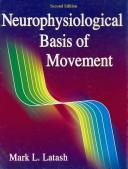
ISBN: 9780736063678 0736063676 Year: 2008 Publisher: Champaign, Ill. Human Kinetics
Abstract | Keywords | Export | Availability | Bookmark
 Loading...
Loading...Choose an application
- Reference Manager
- EndNote
- RefWorks (Direct export to RefWorks)
Neurophysiological Basis of Movement, Second Edition, has been thoroughly updated and expanded, making it more comprehensive and accessible to students. With eight new chapters and 130 pages of fresh material, this second edition covers a wide range of topics, including movement disorders and current theories of motor control and coordination. By emphasizing the neurophysiological mechanisms relevant to the processes of generating voluntary movements, the text targets advanced undergraduates or beginning graduate students who want to better understand how the brain generates control signals and how the peripheral apparatus executes them. (Bron: www.humankinetics.com)
Physiology: movement organs, voice and skin --- Physiology of nerves and sense organs --- Movement --- Movement Disorders. --- Neurophysiology. --- Human locomotion --- Motor ability. --- Movement disorders. --- Locomotion humaine --- Neurophysiologie --- Activité motrice --- Troubles moteurs --- physiology. --- Neurophysiology --- Motor ability --- Movement Disorders --- physiology --- 082595.jpg --- Neurofysiologie --- 612.8 --- 612.8 Nervous system. Sensory organs --- 612.8 Zenuwstelsel. Zintuigen. Motorische neurowetenschappen --- Nervous system. Sensory organs --- Zenuwstelsel. Zintuigen. Motorische neurowetenschappen --- Activité motrice --- Locomotion --- Movement disorders --- Nervous system --- Neurobiology --- Physiology --- Dyskinesia --- Dyskinesias --- Motor disorders --- Disabilities --- Agility --- Coordination, Muscular --- Dexterity --- Manual dexterity --- Manual skill --- Motor control (Physiology) --- Motor dexterity --- Motor skill --- Motor skills --- Muscular coordination --- Skills, Motor --- Ability --- Movement, Psychology of --- Kinesiology --- Mechanical ability --- Diseases --- departement Gezondheidszorg 08 --- beweging --- neurofysiologie --- bewegingsapparaat --- bewegingsstoornissen --- Movement - physiology
Book
ISBN: 9781492526513 1492526517 9781492595274 Year: 2017 Publisher: Champaign, IL : Human Kinetics,
Abstract | Keywords | Export | Availability | Bookmark
 Loading...
Loading...Choose an application
- Reference Manager
- EndNote
- RefWorks (Direct export to RefWorks)
The benefits of a healthy lifestyle are well documented, yet many people continue to struggle with sedentary behavior and obesity. In Biologic Regulation of Physical Activity, Dr. Thomas W. Rowland posits a distinct possibility of the existence of a central biologic controller of activity. If harnessed, this mechanism could lead to breakthroughs in health science professionals' quest for more effective ways of helping people be more active and, as a result, healthier. Rowland is one of the most well-respected pediatric cardiologists in the United States. He has authored three other books and more than 150 journal articles and has served in several key national leadership positions in pediatric medicine. In Biologic Regulation of Physical Activity, Rowland uses his expertise, along with numerous references and direct quotes from expert witnesses, to provide a detailed account of how current research may support the existence of a biologic regulator--a mechanism in the brain that involuntarily controls biological processes--associated with physical activity. Rowland proposes a possible mechanism for such a control and explores the implications of this theory. This developing area of research and theory offers a new lens through which health professionals and those who research issues related to obesity, physical activity adherence, and sedentary behaviors can view their work. The book moves methodically through the research, rationale, and implications of a biologic regulator of physical activity. In part I, Surveying the Evidence, readers are guided through a litany of research--both on humans and on animals--that provides support for the existence of a biologic regulator. This section synthesizes evidence from an interdisciplinary perspective, covering research on topics such as behavioral disorders, brain damage, lifetime activity patterns, and sex differences. Part II, Rationale and Mechanisms details the possible biologic explanation for control of energy output through activity and proposes a mechanism by which it might function in order to maintain an energy in-energy out balance. The hypothesis presented in this section is that the body has a need for energy balance that leads to activity regulation, similar to how the body regulates appetite. In part III, Implications of Biologic Regulation of Activity, some clear implications from current research, which may help health science professionals in their treatment and prevention efforts against patients' obesity and inactivity, are discussed. Rowland also poses some critical questions for further research, if indeed a biologic controller of activity exists, such as how much effect a biologic controller might have on activity level as compared to environmental factors and whether this biologic regulator could be altered. This book will initiate further discussion, examination, and research into the idea that physical activity may be, at least in part, controlled by a central biologic regulator. Further study may lead to a widespread realization that there is an involuntary biologic regulator of activity that, once fully understood, could lead researchers to discover alternative interventions in the fight against inactivity and obesity.
Motor Activity --- Brain --- Energy Metabolism --- physiology. --- 612.6 --- 612.8 --- 572.511 --- 612:796 --- 612:796 Fysiologie van de sport --- Fysiologie van de sport --- 572.511 Posture. Corpulence. Steatopygia --- Posture. Corpulence. Steatopygia --- 612.8 Nervous system. Sensory organs --- 612.8 Zenuwstelsel. Zintuigen. Motorische neurowetenschappen --- Nervous system. Sensory organs --- Zenuwstelsel. Zintuigen. Motorische neurowetenschappen --- 612.6 Reproduction. Growth. Development --- 612.6 Voortplanting. Groei. Ontwikkeling --- Reproduction. Growth. Development --- Voortplanting. Groei. Ontwikkeling --- Motor ability --- Energy metabolism --- Activité motrice --- Métabolisme énergétique --- physiology --- Physiological aspects --- Regulation --- Aspect physiologique --- Régulation --- Activité motrice --- Métabolisme énergétique --- Régulation --- Exercise
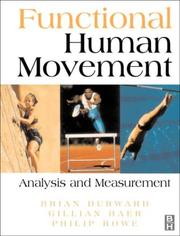
ISBN: 0750626070 Year: 1999 Publisher: Oxford Butterworth-Heinemann
Abstract | Keywords | Export | Availability | Bookmark
 Loading...
Loading...Choose an application
- Reference Manager
- EndNote
- RefWorks (Direct export to RefWorks)
Physiotherapy. Alternative treatments --- kinesitherapie --- Physiology: movement organs, voice and skin --- beweging --- Human locomotion --- Physical therapy. --- Physiothérapie --- Measurement. --- 612.8 --- -Physical therapy --- Physiotherapy --- Medicine, Physical --- Therapeutics, Physiological --- Human mechanics --- Kinesiology --- Locomotion --- Zenuwstelsel. Zintuigen. Motorische neurowetenschappen --- Measurement --- Physiothérapie --- Physical therapy

ISBN: 0898591880 0863770215 Year: 1982 Publisher: London Erlbaum
Abstract | Keywords | Export | Availability | Bookmark
 Loading...
Loading...Choose an application
- Reference Manager
- EndNote
- RefWorks (Direct export to RefWorks)
Movement, Psychology of --- Psychophysiology --- Psychomotricité --- Psychophysiologie --- 612.8 --- Behavioral physiology --- Physiological psychology --- Physiopsychology --- Psychology, Physiological --- Somatopsychics --- Physiology --- Psychobiology --- Mind and body --- Motor psychology --- Motion --- Motion study --- Movement education --- Muscular sense --- Zenuwstelsel. Zintuigen. Motorische neurowetenschappen --- Movement, Psychology of. --- Psychophysiology. --- Psychomotricité
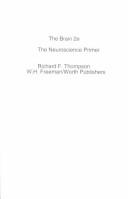
ISBN: 0716723387 0716724855 Year: 1993 Publisher: New York : W.H. Freeman & Co.,
Abstract | Keywords | Export | Availability | Bookmark
 Loading...
Loading...Choose an application
- Reference Manager
- EndNote
- RefWorks (Direct export to RefWorks)
Brain --- Neurosciences --- Cerveau --- anatomy & histology --- Physiology --- 612.8 --- Zenuwstelsel. Zintuigen. Motorische neurowetenschappen --- Brain. --- Neurosciences. --- anatomy & histology. --- physiology. --- Neural sciences --- Neurological sciences --- Neuroscience --- Medical sciences --- Nervous system --- Cerebrum --- Mind --- Central nervous system --- Head
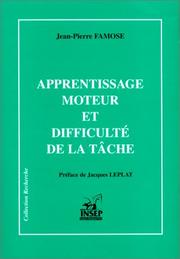
ISBN: 2865800377 Year: 1990 Publisher: Paris : Insep,
Abstract | Keywords | Export | Availability | Bookmark
 Loading...
Loading...Choose an application
- Reference Manager
- EndNote
- RefWorks (Direct export to RefWorks)
Sports --- Psychological aspects --- Study and teaching --- Aspect psychologique --- Etude et enseignement --- Apprentissage, Psychologie de l'. --- Apprentissage moteur. --- Éducation psychomotrice. --- Activité motrice chez l'enfant. --- 612.8 --- Zenuwstelsel. Zintuigen. Motorische neurowetenschappen --- Sports. --- Study and teaching. --- Apprentissage moteur
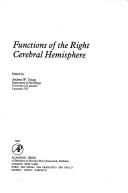
ISBN: 0127732500 0323159109 1299316751 Year: 1983 Publisher: London,New York : Academic Press,
Abstract | Keywords | Export | Availability | Bookmark
 Loading...
Loading...Choose an application
- Reference Manager
- EndNote
- RefWorks (Direct export to RefWorks)
Brain --- Dominance, Cerebral --- Laterality --- Cerebral hemispheres --- Cerveau --- Physiology --- Localization of functions --- Hémisphères --- Localisation cérébrale --- 612.82 --- -612.8 --- Cerebrum --- Mind --- Central nervous system --- Head --- Brain hemispheres --- Split brain --- Nerve centres in general. Brain (cerebrum, encephalon) --- Zenuwstelsel. Zintuigen. Motorische neurowetenschappen --- 612.82 Nerve centres in general. Brain (cerebrum, encephalon) --- Hémisphères --- Localisation cérébrale --- Cerebral hemispheres. --- Localization of functions. --- 612.8 --- Brain function localization --- Cerebral localization --- Localization of cerebral functions --- Neurophysiology --- Phrenology --- Functional localization --- Dominance, Cerebral. --- physiology.
| Listing 1 - 10 of 74 | << page >> |
Sort by
|

 Search
Search Feedback
Feedback About UniCat
About UniCat  Help
Help News
News